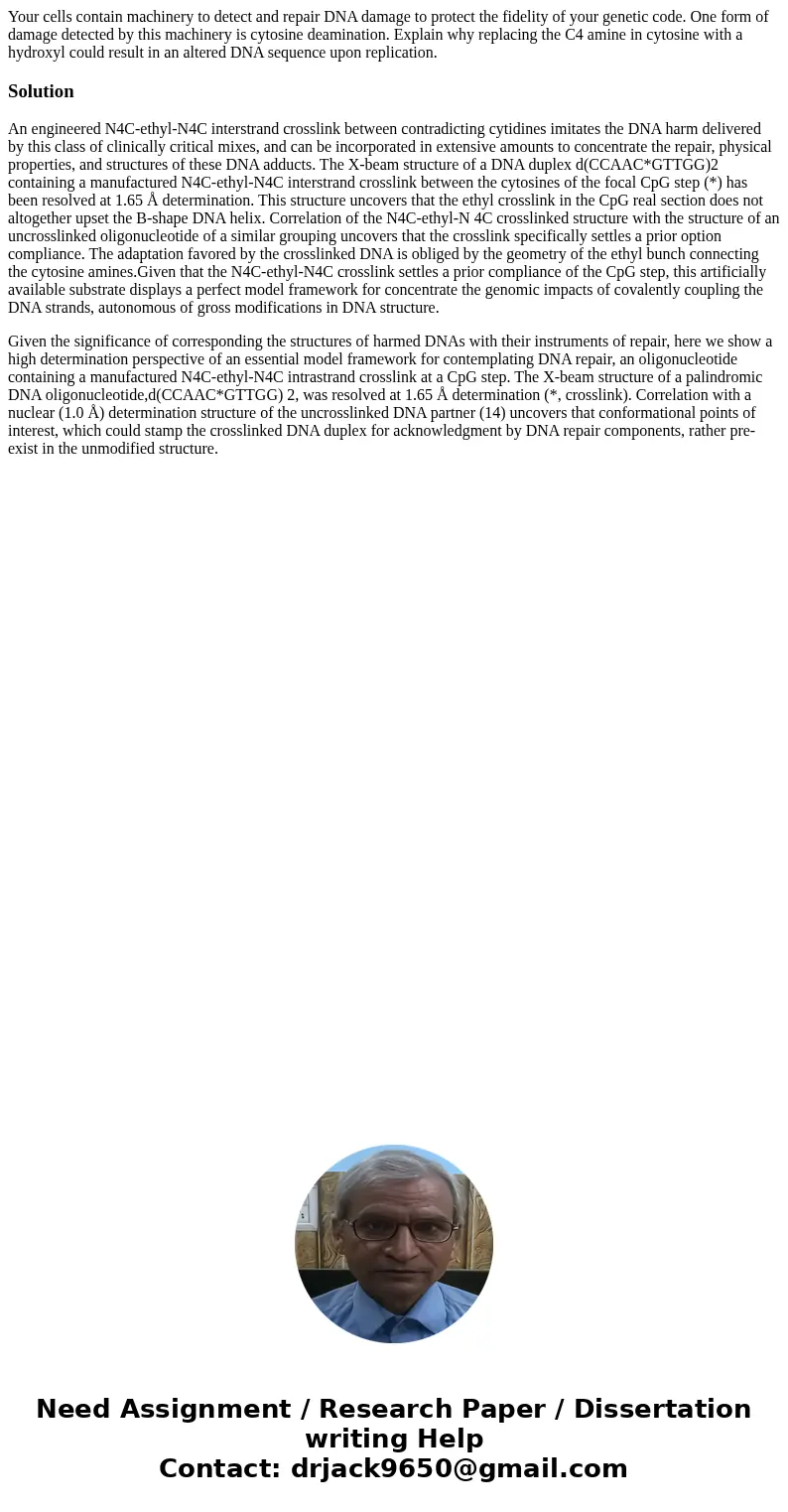Your cells contain machinery to detect and repair DNA damage
Solution
An engineered N4C-ethyl-N4C interstrand crosslink between contradicting cytidines imitates the DNA harm delivered by this class of clinically critical mixes, and can be incorporated in extensive amounts to concentrate the repair, physical properties, and structures of these DNA adducts. The X-beam structure of a DNA duplex d(CCAAC*GTTGG)2 containing a manufactured N4C-ethyl-N4C interstrand crosslink between the cytosines of the focal CpG step (*) has been resolved at 1.65 Å determination. This structure uncovers that the ethyl crosslink in the CpG real section does not altogether upset the B-shape DNA helix. Correlation of the N4C-ethyl-N 4C crosslinked structure with the structure of an uncrosslinked oligonucleotide of a similar grouping uncovers that the crosslink specifically settles a prior option compliance. The adaptation favored by the crosslinked DNA is obliged by the geometry of the ethyl bunch connecting the cytosine amines.Given that the N4C-ethyl-N4C crosslink settles a prior compliance of the CpG step, this artificially available substrate displays a perfect model framework for concentrate the genomic impacts of covalently coupling the DNA strands, autonomous of gross modifications in DNA structure.
Given the significance of corresponding the structures of harmed DNAs with their instruments of repair, here we show a high determination perspective of an essential model framework for contemplating DNA repair, an oligonucleotide containing a manufactured N4C-ethyl-N4C intrastrand crosslink at a CpG step. The X-beam structure of a palindromic DNA oligonucleotide,d(CCAAC*GTTGG) 2, was resolved at 1.65 Å determination (*, crosslink). Correlation with a nuclear (1.0 Å) determination structure of the uncrosslinked DNA partner (14) uncovers that conformational points of interest, which could stamp the crosslinked DNA duplex for acknowledgment by DNA repair components, rather pre-exist in the unmodified structure.

 Homework Sourse
Homework Sourse